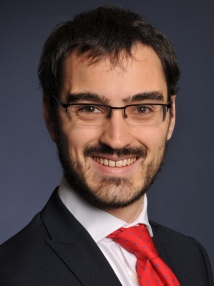Summary
I am an Academic Visitor in the Department of Chemical Engineering at Imperial College London, collaborating on research projects such as LEILAC, a €21M, 5-year Horizon 2020 project.
My areas of expertise are the technologies, economics and policies required to decarbonise industrial processes, with a particular focus on carbon capture and storage (CCS) in the cement sector.
I am interested in developing and working on projects which involve reducing the carbon dioxide emissions of a range of energy-intensive industries such as cement, lime, paper, and iron and steel.
I currently work for Calix, a company developing materials to solve global challenges through new solids processing technologies. We make very high surface area powders which are used in a wide range of applications. We are rapidly expanding into other industrial sectors such as low-carbon cement and lime manufacture via projects such as LEILAC and ANICA. Our research in this area focuses on applying our Direct Separation technology to capture process-derived CO2 emissions, i.e. those from calcining mineral carbonates.
As well as publishing academic papers on CCS in cement, I have contributed to various projects with Imperial Consultants.
I graduated with a PhD from Imperial College in August 2016 on the topic of carbon capture in the cement industry (see below). I was funded by the Grantham Institute, Climate-KIC and Cemex Research Group AG. Before this, I received a First Class Masters of Engineering (Hons) in Chemical and Nuclear Engineering from Imperial College in 2011.
I took a break from my PhD in 2013 to work at the Grantham Institute - Climate Change and the Environment to work as a Research Assistant on industrial decarbonisation policy. This role led to presentation of results at a European energy efficiency conference.
Phd research
My PhD research centred around two main topics: the quantification of CO2 uptake by concrete over its lifetime, and the detemrination of the suitability of the calcium looping CO2 capture process with cement manufacture. My supervisors were Prof Paul Fennell and Dr Nick Florin.
Absorption of CO2 by concrete
Limestone (calcium carbonate) is the main feedstock for cement production. Cement is used to make concrete (mainly calcium hydroxide), which absorbs CO2 from the atmosphere over time, reverting to calcium carbonate. The determination of this rate is of great importance: millions of tonnes of CO2 are absorbed every year. I undertook an exhaustive review of the data in the literature and has applied statistical methods to estimate the rate at which the absorption happens. I then coupled this rate with cement production and used data to estimate the amount of CO2 absorbed by all the concrete in the world, over a 125-year period.
Integrating cement manufacture and calcium looping CCS
Post-combustion carbon capture processes remove CO2 from the gases emanating from the combustion of fuels in air. Calcium looping (CaL) is one such process, but has a major drawback: the calcium oxide (CaO) sorbent which separates the CO2 from the flue gas loses its CO2 carrying capacity over time and so must be removed and replaced by fresh limestone. This produces a waste stream of low surface-area, ‘spent’ calcium oxide. Calcium looping becomes more financially viable if this waste stream can be used as a feedstock in cement manufacture, especially if the calcium looping process captures the cement plant's CO2 in the first place. Therefore, the validation of this coupling of CO2 capture and cement production is imperative. I investigated the effects on the performance of cement made with this ‘spent’ calcium oxide.
Publications
Journals
Driver JG, Hills T, Hodgson P, et al., 2022, Simulation of direct separation technology for carbon capture and storage in the cement industry, Chemical Engineering Journal, Vol:449, ISSN:1385-8947
Vallejo L, Mazur C, Strapasson A, et al., 2021, Halving Global CO2 Emissions by 2050: Technologies and Costs, International Energy Journal, Vol:21, ISSN:1513-718X, Pages:147-158
Menczer F, Hills T, 2020, THE ATTENTION ECONOMY, Scientific American, Vol:323, ISSN:0036-8733, Pages:54-61
Lisbona P, Bailera M, Hills T, et al., 2020, Energy consumption minimization for a solar lime calciner operating in a concentrated solar power plant for thermal energy storage, Renewable Energy, Vol:156, ISSN:0960-1481, Pages:1019-1027

